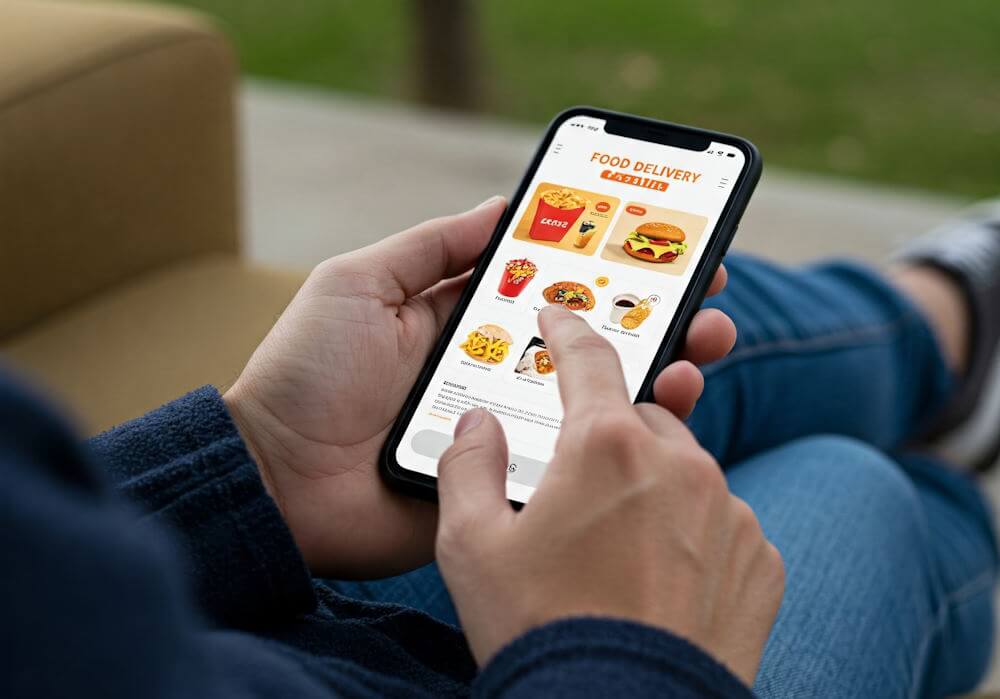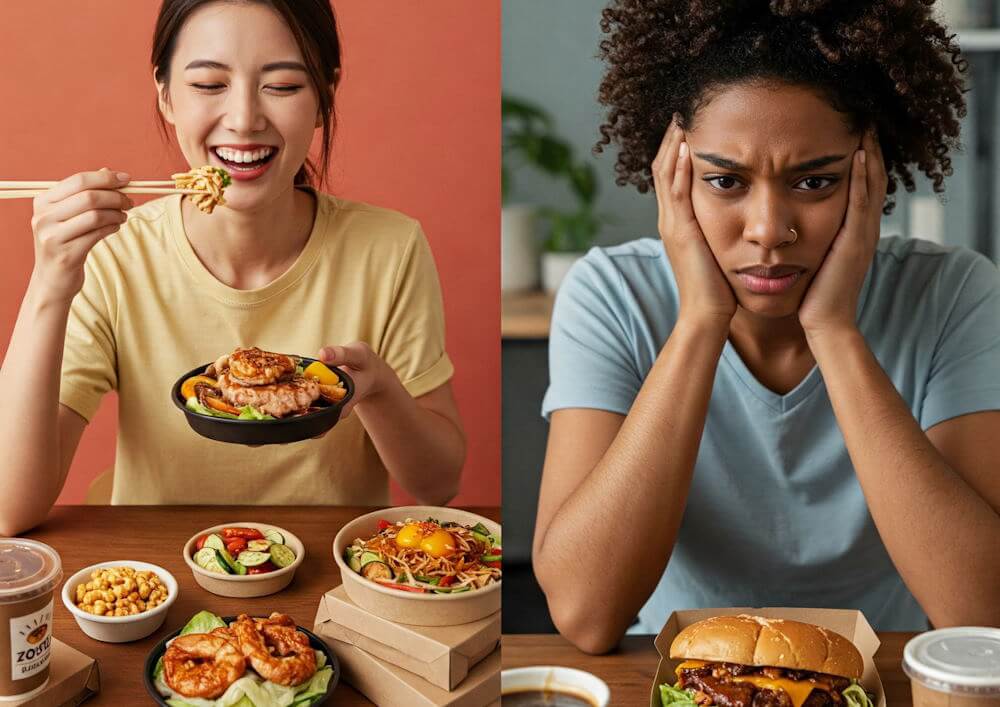In recent years, food delivery apps have transformed the dining experience for many consumers. These platforms facilitate the ordering of meals from restaurants and provide a convenient solution for those seeking quick access to food options without the need to leave their homes. The rise in popularity of food delivery applications can be attributed to the increasing reliance on technology and the desire for convenience in today’s fast-paced lifestyle.
The proliferation of smartphones has significantly contributed to the growth of the food delivery industry. People now leverage mobile applications to browse a wide array of local eateries, explore diverse cuisines, and place orders with just a few taps on their screens. As a result, food delivery apps have become an integral part of modern dining habits, appealing to a variety of consumers ranging from busy professionals to families and college students.
Historically, the food delivery service existed in more traditional formats, such as calling a restaurant directly for take-out. However, food delivery apps have streamlined this process by offering user-friendly interfaces that allow customers to browse menus, customize their orders, and track delivery status in real-time. These advancements eliminate many barriers associated with food ordering, thus enhancing the overall user experience. Consequently, the convenience provided by these platforms is a major factor driving their growing adoption.
Current trends indicate an increasing reliance on food delivery apps, particularly due to the impact of global events such as the COVID-19 pandemic. With many restaurants pivoting to online service models, food delivery apps have become essential for ensuring accessible dining options. Additionally, partnerships between tech companies and restaurants continue to shape the future of food delivery, suggesting a broadening range of services and delivery methods. The combination of technological progress and consumer demand positions food delivery apps as a pivotal element within the culinary landscape.
Advantages of Food Delivery Apps
Food delivery apps have swiftly become an integral part of modern dining, offering users a range of advantages that enhance the overall culinary experience. One of the most significant benefits is the convenience these apps provide. With just a few taps on a smartphone, users can browse through an extensive selection of local restaurants and order meals from the comfort of their homes or workplaces.
Time-saving is another pivotal factor that contributes to the growing popularity of food delivery apps. In today’s fast-paced lifestyle, many individuals find it challenging to dedicate time to cooking or dining out. Food delivery services eliminate the need for meal prep and travel, allowing consumers to enjoy their favorite foods while reclaiming precious time for other activities. Moreover, the apps often feature real-time tracking, so users can monitor their order’s status and anticipate its arrival without unnecessary delays.
The variety of options available through food delivery apps is particularly appealing. Users can explore a diverse array of cuisines, ranging from traditional dishes to contemporary food trends, all housed within one platform. This abundance enables customers to discover new eateries they may not have encountered otherwise, broadening their culinary horizons and promoting local businesses. This exploration not only enhances the dining experience but also supports a vibrant food culture within the community.
Additionally, many food delivery apps provide users with special deals, discounts, or loyalty programs, making dining out more accessible and economical. Such promotions encourage consumers to order food frequently, thereby maximizing the advantages of utilizing these platforms. With all these benefits, it is clear that food delivery apps play a significant role in reshaping how we approach meal times in today’s society.
Disadvantages of Food Delivery Apps
While food delivery apps offer convenience, several disadvantages warrant consideration. One of the most significant downsides is the potential for high delivery fees. These services often charge customers additional fees that can inflate the overall cost of a meal significantly. Furthermore, this financial burden does not always guarantee efficiency in service.
Another notable drawback is the lack of quality control over the food being delivered. When ordering through an app, customers rely on restaurants to uphold their usual standards of food preparation, which can sometimes falter in a remote service setting. Issues such as incorrect orders, incorrect temperatures, or subpar meal presentation are not uncommon. Customers often find that the food they receive does not match their expectations based on previous in-restaurant experiences.
Delays in delivery can also be a recurring problem. Customers are frequently left waiting longer than expected for their orders, leading to frustration. These delays can be attributed to various factors, such as the distance between the restaurant and the customer’s location, high demand during peak hours, or logistical issues within the delivery framework itself. Such unpredictability can detract from the overall experience, transforming a much-anticipated meal into a source of annoyance.
Moreover, the rise of food delivery apps can have negative implications for local restaurants. Many small establishments may struggle with the commission fees imposed by these platforms, which can ultimately affect their profitability. Additionally, an over-reliance on these apps might shift consumer habits in a way that diminishes foot traffic to brick-and-mortar locations, potentially threatening the existence of beloved local eateries. Customer complaints often revolve around these nuances, illustrating a growing dissatisfaction with the trade-offs that come with convenience.
Impact on Local Restaurants
The advent of food delivery apps has significantly transformed the landscape of local restaurants, prompting both advantages and concerns. These platforms, which connect consumers with a variety of dining options, have the potential to expand a restaurant’s customer base beyond its physical location. However, the impact on local dining establishments is multifaceted, primarily influenced by the commission structures imposed by these apps.
Most food delivery services charge restaurants a commission fee that can range from 15% to 30% per order. For many small and independent eateries, such fees can substantially strain profit margins, making it difficult to maintain competitive pricing. Consequently, restaurants may feel compelled to increase menu prices to offset these commissions, which can deter price-sensitive customers and diminish overall sales volume. From a financial perspective, while delivery apps can drive sales, they often require a careful balancing act between remaining profitable and appealing to consumers.
On the flip side, food delivery apps can introduce local restaurants to new clients who might not have otherwise visited. For many establishments, particularly those in more remote or underserved areas, these platforms can provide crucial exposure and marketing opportunities. Restaurant owners often express mixed feelings; while they appreciate the increase in visibility, they worry about the sustainability of their business model if reliance on food delivery continues to grow.
Moreover, some restaurant owners argue that these apps can detract from the essence of the dining experience. By encouraging takeout, the traditional sit-in dining experience may suffer, potentially harming the community atmosphere local restaurants strive to create. Therefore, the relationship between food delivery apps and local dining businesses is complex, requiring ongoing discourse and adaptation as the industry evolves.
Health Considerations
Food delivery apps have transformed the way consumers access meals, but they come with various health implications that merit consideration. One significant concern is the tendency for users to order less healthy food options. The convenience of ordering through these platforms may lead to impulsive choices, often favoring higher-calorie, processed, or fast food items over more nutritious options such as salads or whole grain dishes. This can contribute to poor dietary habits and may increase the risk of health issues such as obesity, heart disease, and diabetes.
Moreover, food safety is another crucial aspect to consider when utilizing delivery services. In the timeframe from restaurant preparation to delivery, food may be exposed to unsafe temperatures, risking bacterial growth and contamination. The hygienic conditions of delivery personnel and the vehicles being used to transport food are additional factors that can affect food safety. Consumers should be aware of these risks and choose reputable apps that prioritize sanitary practices.
To mitigate health risks when using food delivery apps, it is essential to approach meal selection with nutritional awareness. Users are encouraged to explore the menu options carefully and seek out healthier choices. Many delivery platforms now provide filters for categories such as “healthy,” “low-calorie,” or “vegetarian,” which can guide users towards better options. Additionally, consumers can benefit from opting for smaller portion sizes, adding healthy sides, or sharing meals with others to control caloric intake.
Using food delivery apps does not inherently equate to unhealthy eating, but it does require mindfulness and responsibility. By being aware of the potential drawbacks and making conscious choices, users can enjoy the convenience of food delivery while also prioritizing their health.
User Experience
The user experience associated with food delivery apps significantly influences consumer satisfaction and their likelihood of future usage. A primary factor in this experience is the ease of navigation within the app. A well-designed interface allows users to effortlessly browse menus, customize orders, and check delivery times. Users often favor apps that feature intuitive layouts and responsive designs, which enhance the overall accessibility of food choices. Comparatively, apps that are confusing or cluttered tend to result in frustration and abandoned orders.
Another critical aspect of user experience is customer service. Efficient communication channels—such as live chat, email support, or customer hotlines—enable users to resolve issues related to their orders quickly. Reviews frequently indicate that prompt and effective support contributes to user loyalty, as customers appreciate being able to address concerns or queries with ease. Furthermore, the presence of user-friendly FAQs and accessible help sections can enhance confidence in using the app. Conversely, negative experiences related to poor customer service can diminish user trust and discourage further engagement.
Reliability also plays a pivotal role in shaping consumer experiences with food delivery apps. Users expect timely deliveries, accurate order fulfillment, and seamless payment processing. Consistent delivery timelines and adherence to quoted estimates foster a sense of predictability that is essential in building customer relations. Frequent issues, such as order inaccuracies or significant delays, significantly impact user satisfaction and could lead to unfavorable ratings and reviews. By analyzing user feedback, developers can identify recurring problems and make necessary adjustments, ensuring a smoother experience for new and returning users alike.
Economic Considerations
The proliferation of food delivery apps has introduced a new paradigm in the dining experience, often affecting consumers’ economic behavior. One significant factor to consider is the cost comparison between traditional dining options and food delivery services. While food delivery apps offer the convenience of enjoying meals at home, they typically come with additional charges such as delivery fees, service charges, and tipping expectations. These costs can substantially increase the overall expense of a meal compared to dining in a restaurant, where diners can benefit from a fixed price without the added delivery costs.
Furthermore, the impact of delivery services on consumer spending is notable. Many individuals find themselves purchasing meals more frequently when they can access a wide variety of dining options through their smartphones. This convenience can lead to impulsive spending behaviors, prompting users to order food more often than they would if dining out required more planning or effort. Consequently, while food delivery apps provide short-term satisfaction and ease, they can also contribute to long-term financial implications on individual budgets and overall spending patterns.
Future of Food Delivery Apps
The food delivery app industry is poised for significant evolution, propelled by various technological advancements and shifting consumer preferences. As people increasingly turn to digital solutions for their dining needs, it is vital to examine how these applications might adapt in the near future. The onset of the pandemic accelerated the adoption of food delivery services, and many of the changes introduced during this period are likely to persist.
One of the most prominent trends is the integration of AI and machine learning in food delivery apps. These technologies can enhance the user experience by providing personalized recommendations based on previous orders and preferences. Furthermore, AI can streamline logistics, optimizing routes for delivery drivers and reducing delivery times. This technological progression will not only increase efficiency but also improve customer satisfaction, a crucial factor in driving user retention in this competitive landscape.
In addition to AI, the growing consumer inclination toward health and sustainability is set to reshape food delivery services. There is a rising demand for restaurants and meal options that prioritize fresh, local ingredients and environmentally friendly practices. Consequently, food delivery apps may see an increase in partnerships with sustainable restaurants and the inclusion of more eco-conscious options within the app interface. This could also extend to packaging, with a shift toward biodegradable and recyclable materials.
Post-pandemic, as people adapt to hybrid lifestyles that blend remote and on-site activities, the role of food delivery apps will become even more integral. Consumers may seek convenience without sacrificing quality, prompting innovations such as subscription services for meal kits or grocery delivery. Overall, the future of food delivery apps is likely to be characterized by enhanced technology, an emphasis on health and sustainability, and a deeper integration into everyday life, making them indispensable tools for modern dining.
Conclusion: Weighing the Pros and Cons
In recent years, food delivery apps have significantly transformed the way consumers access meals, offering a mix of conveniences and challenges that merit careful consideration. As we reflect on the pros and cons discussed, it becomes apparent that these platforms bring both benefits and drawbacks to the dining experience.
On one hand, food delivery apps provide unparalleled convenience, allowing users to order meals from a variety of nearby restaurants with just a few clicks on their mobile devices. This accessibility can be particularly advantageous for individuals with busy schedules, those living in urban areas where dining options abound, or anyone looking to expand their culinary horizons without the commitment of dining out. Moreover, many of these platforms often include user-friendly interfaces, real-time tracking features, and promotional deals, making the ordering experience more attractive.
Conversely, it is essential to recognize the potential downsides associated with food delivery services. Concerns over the costs of delivery fees, which can add significant expenses to each order, merit scrutiny. Additionally, the inconsistency of food quality and delivery times can lead to dissatisfaction among users. Furthermore, frequent reliance on food delivery apps may contribute to poor dietary habits, as they can encourage impulsive decisions regarding unhealthy food choices due to the large selection available at one’s fingertips.
Ultimately, the decision to utilize food delivery apps should be based on individual lifestyle, dietary preferences, and financial considerations. By weighing the advantages of convenience against the drawbacks of cost and potential health implications, users can make informed choices that align with their needs. Awareness of these factors will enable consumers to better navigate the evolving landscape of food delivery services and integrate them thoughtfully into their lives.





